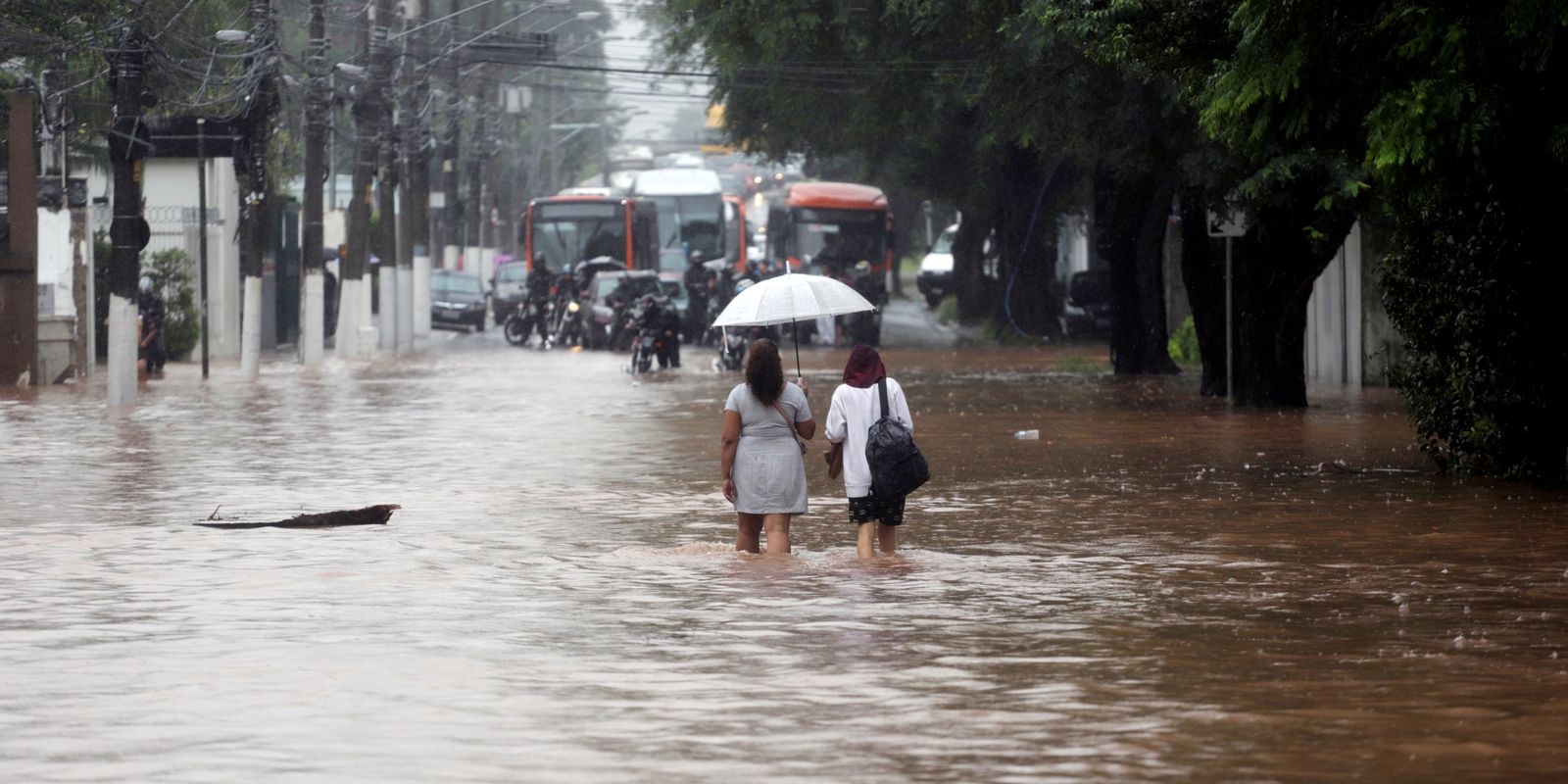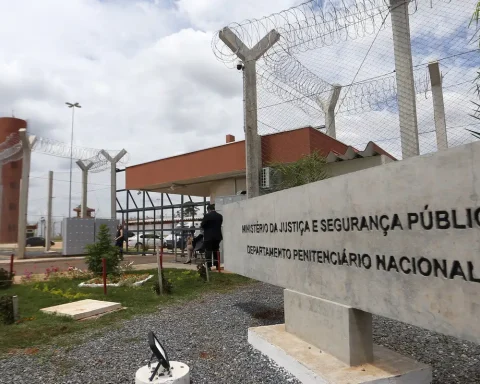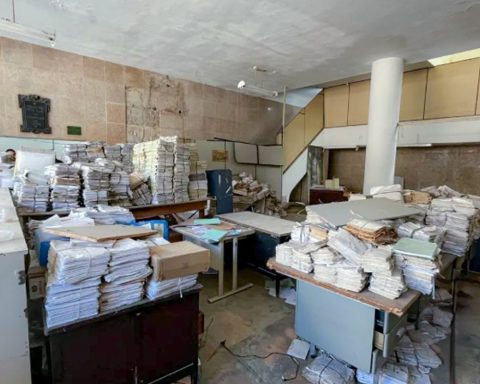Next Friday (17th) is the deadline to send contributions for the revision of the Master Plan of the City of São Paulo. The municipal law aims to establish urban planning guidelines for expansion and reorganization of the city. In São Paulo, the lack of proper planning is one of the causes of the constant flooding that interrupts traffic and invades homes, leaving hundreds of families at risk, in addition to financial losses.
Despite not being the focus of the legislation, the problem of flooding, which is directly discussed in the master plans for drainage, is one of the themes that permeates all debates on urban planning in the city of São Paulo and the metropolitan region.
“In the framework of the last 30 years, we have the process of progressive inclusion of the drainage problem within the urban legislation, as not being just an engineering problem – of channeling streams – but as an urban planning problem. In the sense that the form of city growth interferes with the form [como] the soil is waterproofed and the volumes that go to the canals are increased”, explains the professor of architecture and urbanism at Mackenzie, Renato Anelli, who also represents the Instituto dos Arquitetos do Brasil on the municipal council of urban policy.
This understanding is consolidated, according to Anelli, because if the occupation and waterproofing of the soil are not considered, the drainage works will not be able to contain the volumes of water that are not absorbed. “It remains for engineering to keep trying to dry up these contributions [quantidade de água da chuva que vai para os canais] that are always growing. A little dry ice, you never manage, ”she emphasizes.
diffuse drainage
To alleviate the problem in urban areas, Anelli advocates that new properties have water containment systems, to prevent the entire flow from reaching the stormwater galleries and streams at once. “These are small tanks, open or closed, or small lakes that are planned to prevent water from going into the main channels and overflowing these channels”, he details.
Thus, the houses and buildings support the city’s infrastructure in an attempt to mitigate the impacts of the rains. “We cannot start draining just outside the private property. The most modern concepts of drainage establish that the control of this flow must be done on the roof of the buildings, inside the lots”, emphasizes the professor.
This type of measure is foreseen, according to the professor of the Faculty of Architecture and Urbanism of the University of São Paulo (USP) Angelo Filardo, in the pertinent legislation. “Ensure, for future uses, that they have permeable areas, have afforestation and implement devices for the reuse or retention of rainwater in the lots. This type of measure is contemplated in the master plan, in the zoning law and must be maintained”, he says.
The issue is that in an already densely populated city, such as São Paulo, this type of measure has difficulty producing effects quickly. “In the ready-made city, the mechanisms for regulating future use do not respond to the problem with the urgency that the problem requires”, he points out.
great works
In the neighborhoods of the Jardim Pantanal region, in the east of São Paulo, residents have suffered for at least 15 years from flooding that can last for weeks during periods of rain. There are around 30,000 people who live in an environmental protection area on the banks of the Tietê River.
In January, the city of São Paulo announced R$ 400 million in investments to try to contain the floods. There are several interventions, which include equipment for pumping water and polders – retaining walls – to prevent water from invading the neighborhoods, in addition to new galleries and culverts.
These devices, in Anelli’s assessment, have limited effects. “This is a solution that has some efficiency at first, but it has high costs”, he says about the retaining walls. According to him, if the water exceeds the capacity of the structures, the population may be at risk. “With climate change and the greater intensity of rainfall that is predicted, modeled, and being confirmed, we need to know if these dykes are being dimensioned already anticipating these exceptional rains”, he adds.
For this reason, he considers whether, in situations like this, it would really be necessary to take the families to another region. “If the best thing would not be to resettle these people in safer places”, he questions. This type of measure should also be considered, in Anelli’s opinion, in places where the channeled space destined for the river or stream is too narrow for the volume of water that arrives with the rains. “Opening up some space so that this floodplain can function as a flood dampening device”, he says.
In the absence of actions to improve the situation of populations in this type of risk area, professor at the Faculty of Architecture and Urbanism at the University of São Paulo (USP) Alexandre Delijaicov says that people who live in Jardim Helena, one of the neighborhoods in the region of Jardim Pantanal, are developing strategies to cope with recurrent floods. “After losing the washing machine and refrigerator so much, they transformed the first floor of the house and put everything that is valuable there. On the ground floor there are plastic chairs, ”he says.
The Space of the Rivers
For Delijaicov, who is also a career architect at City Hall and coordinates, among other activities, a research group on urban and river infrastructures, the way in which floods affect life in the capital of São Paulo is linked to the very conception of the city. “The first problem is that we invaded, occupied and sold the largest river beds. There is no solution, ”he emphasizes.
The lack of a wide supply of housing, which includes the entire population, prevents, in the expert’s assessment, even the success of measures that should help preserve the rivers and prevent the occupation of areas at risk. “Many people who are on the edge of the Tietê ecological park. That is, the government tried to make an ecological park, but people have nowhere to live, they invaded there ”, he explains.
The containment of water from the streams during times of heavy rain can be done, according to Delijaicov, by opening other parallel channels in addition to the main one in which the river is located. “We have to multiply the river by three. Recover the river that is polluted and build a canal tunnel on each side,” he says. Similar models exist, according to him, in European cities such as Vienna, Austria, and Paris, France.
These channels can also be used, according to the specialist, to receive rainwater, which is contaminated by pollution and dirt that remains in the streets, allowing it to be treated properly.
The professor also considers it essential to reopen part of the channeled streams and promote environmental education so that the population preserves the springs. He also associates the need for programs that improve waste management, with financial incentives for disposables to be sent for recycling, as well as maintaining the constant cleaning of storm drains and galleries that receive rainwater.
















